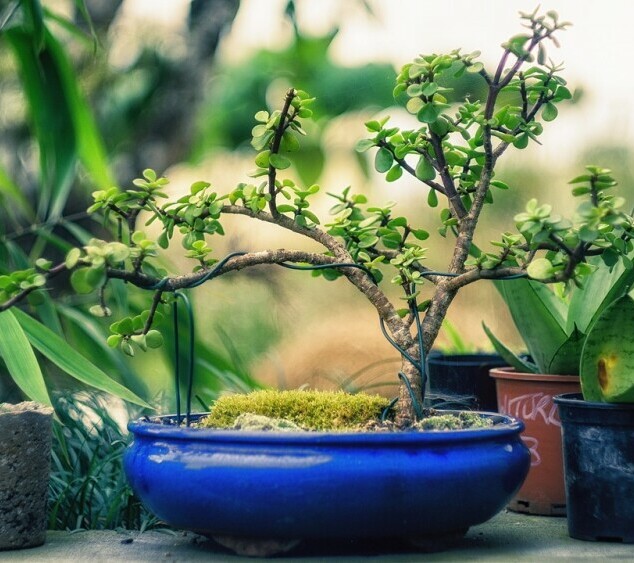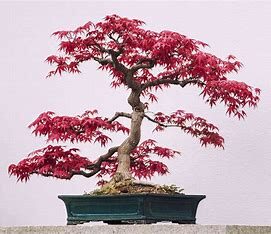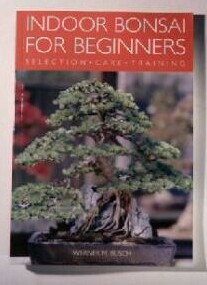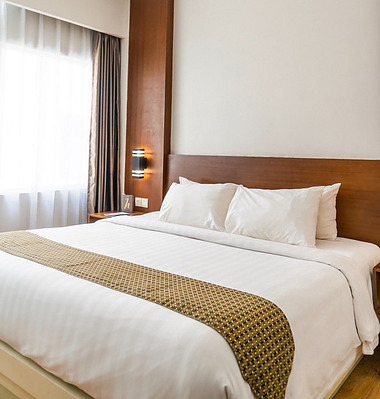How To Start A Bonsai Tree For Beginners
Bonsai trees aren’t just regular plants potted in shallow dishes; they’re synonymous with artful patience and a connection with nature. As a beginner, you might appreciate how starting a bonsai can be a significant step towards an eco-friendly lifestyle. When cultivated correctly, these miniature trees can purify air, reduce stress, and conserve soil.
When you decide to grow a bonsai tree, the first step is selecting the right species. Consider factors like growth rate, hardiness, and maintenance needs. For beginners, species like the Ficus, Jade, or Chinese Elm are recommended due to their resilience and ease of care.
Here’s a little transparency: Our website contains affiliate links. This means we may receive a small commission if you click and make a purchase. Don’t worry, there’s no extra cost to you. It’s a simple way you can support our mission to bring you quality content.”
Now, let’s talk tools. A solid beginning requires the right equipment. At the very least, you’ll need a pair of sharp bonsai scissors for pruning, wire cutters, and a good-quality pair of tweezers. These will be your foundational tools for shaping and caring for your bonsai.
Once you have selected your tools and tree, find the perfect spot. A bonsai needs a place with sufficient natural light and shelter from strong winds or direct afternoon sun. This consideration isn’t just aesthetic; it’s about providing the best environment for your tree to flourish.
Next, you’ll plant your tree. Start with a suitable pot that accentuates your tree’s aesthetics and provides adequate drainage. This is where you lay the groundwork for your bonsai and set the stage for the next crucial phase of the journey: shaping your tree into a living sculpture.
#2 Hawaiian Umbrella Bonsai Tree
#3 Norfolk Island Pine Bonsai Tree
Molding Nature’s Art: Shaping Your Bonsai Tree
Now that you’ve started your bonsai journey, it’s essential to understand the art of shaping your tree. Shaping is more than simply making your bonsai aesthetically pleasing; it’s about creating a miniature representation of nature’s grandeur. Here’s how you can confidently start guiding your bonsai’s growth.
Grasp the basics of bonsai shaping techniques by exploring the different styles, like the formal upright, informal upright, or cascading form. These styles mimic the shapes that trees naturally take in different environments. Familiarizing yourself with these can inspire the direction you take with your bonsai. Remember you want to give your tree the most natural look possible.
Pruning is a fundamental technique in shaping your bonsai. You need to know where to make cuts to encourage growth in the right places, which branches to leave for your tree’s health, and where to thin out foliage to expose the essential structure of your bonsai.
Wiring is another cornerstone of bonsai shaping. You can gently guide them into your desired shape by carefully wrapping wire around branches. This process can be delicate, and getting it right often requires practice. Start with aluminum wire, which is more forgiving for beginners, and remember to monitor the wire to prevent it from cutting into the growing wood.
Consistent maintenance is vital to a thriving bonsai. Each cut and adjustment is a step toward your vision for the tree. However, this isn’t a rush job. Your patience will be rewarded as you watch your bonsai slowly take on a shape influenced by your hand and nature’s inherent beauty.
Lastly, shaping a bonsai, like any skill, presents challenges. You might encounter stubborn branches, non-ideal growth patterns, or second-guess your aesthetic choices. Don’t worry; these hurdles are all part of the learning process. Engage with other enthusiasts, read widely, and remember that every master was once a beginner.
The Zen of Bonsai Care: Tips for a Flourishing Miniature Tree
Your bonsai is more than a plant; it’s a living sculpture. Proper care is paramount for its growth and longevity. Watering your bonsai can initially seem daunting, but it’s all about balance. Check the soil’s moisture daily; it’s time to water deeply when the top feels slightly dry. Use rainwater or tap water left out to reach room temperature. Picture yourself as a farmer tenderly caring for a growing crop – water is a critical nutrient for your trees.
The right soil mix does wonders for your bonsai’s health. Combining akadama, pumice, and fine gravel allows for excellent drainage and oxygen circulation to the roots. It’s an investment worth making. You can usually find good bonsai growth soil at your local home improvement store or order it online – it doesn’t cost much, and your trees will flourish on great soil as a foundation.
Sunlight and the right temperature are crucial. Most bonsai trees thrive in the morning sun and afternoon shade. Indoor trees still require bright, indirect light. Guard your bonsai against extreme temperatures by placing it in a location that remains relatively stable, climate-wise.
When nourishing your tree, opt for a balanced, slow-release fertilizer. Administer it during the growing season, following the package instructions to prevent over-fertilizing, which can harm your tree.
Lastly, vigilance against pests and diseases will keep your bonsai robust. Inspect regularly, and act promptly if you spot any signs of trouble. Use organic treatment options whenever possible to maintain your bonsai’s eco-friendly appeal.
Beyond Aesthetics: Bonsai as Decor and a Fulfilling Hobby

Adopting bonsai cultivation as part of your lifestyle isn’t just about adding a touch of green to your home. It’s about embracing an eco-friendly practice that reflects a commitment to the environment and personal growth. Each bonsai tree, with its unique shape and delicate foliage, becomes more than just a decorative element; it’s a living sculpture and a testament to your patience and care.
Integrating a bonsai into your home decor presents an opportunity to infuse nature into your everyday spaces. These miniature trees can serve as striking centerpieces or subtle yet elegant accents in a room. Place your bonsai on a prominent display shelf or use it to animate a quiet corner. The simplicity and serenity of a bonsai can complement a range of interior designs, from minimalist to eclectic.
Choosing the right bonsai tree can also harmonize with your home’s aesthetic. Pay attention to the pot you select, ensuring it complements both the tree and your room’s color scheme. Consider the seasonal changes your bonsai will experience and anticipate how they will interact with your living environment throughout the year.
Beyond their visual appeal, bonsai trees offer a way to engage with nature on a personal level. The daily ritual of caring for your bonsai can be a source of relaxation and mindfulness. It can bring peace and accomplishment, especially as you watch your tree respond to your attentive nurturing over time. Growing a bonsai tree is a fascinating art form that can help you derive great personal satisfaction.
Should you find yourself drawn deeper into the bonsai world, numerous communities and groups that share your passion exist. Participation in workshops, exhibitions, and forums can enrich your understanding and appreciation of bonsai while connecting you with like-minded enthusiasts. As your proficiency grows, you might explore more complex techniques and styles, transforming this hobby into a lifelong pursuit of horticultural artistry.






Hi there,
I just dove into your beginner’s guide for starting a bonsai tree and wanted to say a big thank you! The tips are practical and easy to follow, and I appreciate the specific species recommendations for newbies like me. The section on the importance of the right tools and environment has opened my eyes. Do you have any advice on how to deal with common pests or diseases that affect these recommended bonsai species? I want to be prepared for any issues that might come up.
Thanks again for such a helpful resource!
Cheers
Dean
Regular inspection of your trees is key in improving their health – look for things like discolored leaves, the presence of pests, holes, or webs. Keep the moisture content of your soil optimum to improve circulation in the root system.
Use organic pest control methods such as neem oil or insecticidal soap (add 2 tablespoons of light oil such as vegetable oil, a teaspoon of cayenne pepper, a teaspoon of either vinegar or Listerine mouthwash and a 1/4 of a pure soap bar like Ivory soap in about a little more than a quart of rainwater or tap water that has sit for a bit – let the soap dissolve overnight and put your mixture in a bottle sprayer; if it’s still a bit strong you can always add a little more water to dilute).
For detailed instructions on specific recommendations for treating conditions on your bonsai trees, I highly suggest getting the book for beginning bonsai tree growers listed in the article. It is worth the cost of ensuring that you get great results.
Elridge Jones’ comprehensive guide to starting a bonsai tree for beginners beautifully encapsulates the artistry and mindfulness inherent in cultivating these miniature marvels of nature.
From selecting the right species to mastering shaping techniques and nurturing the tree with care, you provide invaluable insights for novices embarking on their bonsai journey.
With an emphasis on eco-friendly practices and personal growth, this article not only serves as a practical manual but also inspires a deeper connection to the natural world through the art of bonsai cultivation.
Questions:
(1) What are some common challenges beginners might face when starting their bonsai journey, and how can they overcome them?
(2) How does integrating bonsai cultivation into one’s lifestyle contribute to environmental consciousness and personal growth?
Frustration. Taking up bonsai trees as a hobby requires patience – you will need to take diligent care of your tree as it grows. Cultivating bonsai trees is like gardening, you gain satisfaction from the successful growth of your plants which are a part of your environmental journey – you are contributing to caring for the earth.
I like your ideas and advice on planting Bonsai’s, as I don’t know much about Bonsai plants, but it would be an interesting hobby to have. How long do they live for and how big do they grow? What is the heritage behind these plants, and when did this all begin?
where would you buy them? Or do they grow from a seed? Are they low maintenance and can they be left outside?
Overall, it’s quite interesting – and just a few questions, I would like to find out more.
You can find a selection of trees here. The article lists a book that gives good information on growing your first tree. Trees can be grown outside, but their care is the same.